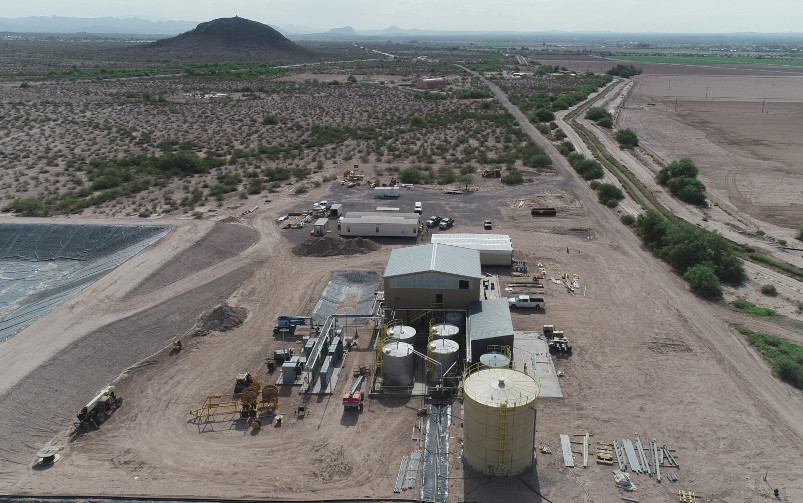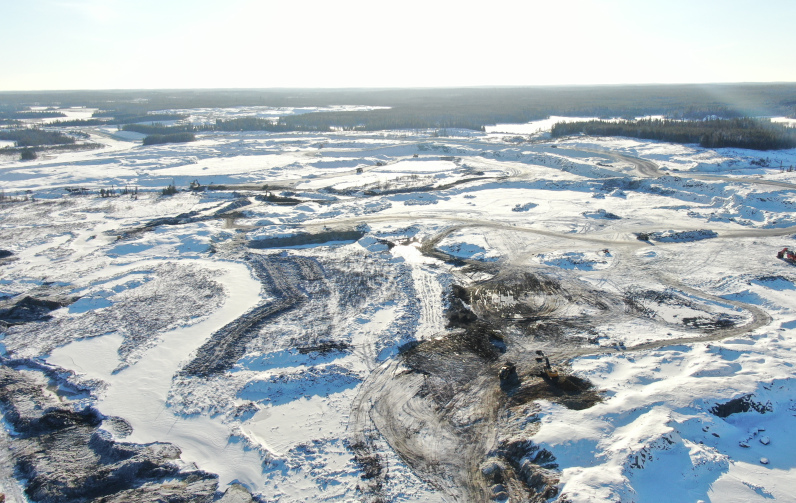After 18 years of production, Hudbay's 777 mine in Flin Flon, Manitoba, will be decommissioned by September of this year. Courtesy of Hudbay Minerals.
Welcome back to your weekly mining news recap, where we catch you up on some of the news you may have missed. This week’s headlines include international conflict potential for critical minerals control, Australia’s proposed mining sexual harassment register and a review of oversight in B.C. mining.
The St. Lawrence River-adjacent town of Bécancour, Quebec, is emerging as a hotspot for battery production. Electra Battery Materials is the latest firm expressing interest in establishing operations there. Metal Tech News reported the company is in preliminary discussions with the province about building a cobalt refinery in the area. The town’s access to hydroelectricity, its proximity to relevant mining projects, and campaigning efforts to attract industrial business are all factors that have contributed to making it an attractive location for lithium battery business.
Imperial Oil and E3 Lithium have formed an agreement to collaborate in advancing a lithium-extraction pilot project in Alberta which will explore the redevelopment of the historic Leduc oil field into a source of lithium. E3 Lithium’s technology would extract the critical mineral from the lithium-rich brine at Imperial’s site, with potential for the commercial development of batter-grade products. The drilling for the first lithium evaluation wells is planned to be completed by the end of the third quarter.
A decision by Chile’s state-owned Codelco to permanently close down a polluting smelter has led to 50,000 copper workers going on strike to protest the decision, demanding it instead be upgraded, as reported by Mining.com. The decision followed an environmental incident that caused dozens to fall ill, though Codelco claims that the decision, backed up by new president Gabriel Boric, was 30 years in the making. The striking workers are arguing that a US$53 million investment in gas-retaining capsules would fix the problem instead.
High inflation and rising interest rates have seen metals and mining stocks lose all the gains achieved earlier this year, as reported by Bloomberg. The S&P/TSX Composite Materials Index is now negative for 2022, with the Bank of Canada having implemented its biggest interest rate increase in decades back in mid-April.
Canada’s Department of National Defence is warning that critical minerals could become the 21st-century equivalent of the ‘oil weapon,’ as governments and companies race to secure electrification supplies, as reported by CBC News. The DND’s report states that China controls about 90 per cent of the world’s supply of rare earth elements and “is willing to use [them] as a political weapon.”
Australia announced it will push its mining industry to set up a register of sexual harassment perpetrators following a state report by Western Australia detailing “horrifying” and “appalling” behaviour as well as a lack of action from major companies such as BHP and Rio Tinto, as reported by Reuters. The report details abuse endured by women in the industry, including a history of complaints concerning the region’s fly-in, fly-out camps. The government is also examining legal measures to put the onus on companies to ensure harassment-free workplaces.
With open-pit mining having to dig deeper and deeper over the past century, Dr. Stefano Utili found inspiration for more efficient slope configurations from an unusual source: Japanese castle moats. His software solution, OptimalSlope, identifies the best slope shape for a pit based on the thickness of the rock layers and their mechanical properties, inspired by the concave walls of the moats. The more precise shapes allow increasing the overall steepness of the pit walls by one to four degrees, making for a more efficient design that is just as safe.
Vale expects to spend US$400 million this year to decommission Brazilian tailings dams, with 12 out of its 30 structures anticipated to be eliminated by the end of 2022, as reported by Reuters. Seven structures have already been taken care of as part of the US$4 billion program to prevent disasters like those of Brumadinho in 2019 and Mariana in 2015. By the end of the year, dams holding 46.9 million cubic metres of tailings are expected to have been decommissioned.
Mining activities are ending at Hudbay’s 777 zinc mine in Flin Flon, Manitoba, after 18 years of production and no recent discovery of deposits that might extend the mine life. Employees of the mine are being transitioned to Hudbay’s Snow Lake operation in the same province. The mine and its zinc plant will be fully decommissioned by September of this year, and the concentrator and tailings impoundment area will be shifted to care and maintenance.
British Columbia’s auditor general has found that the province has improved in its oversight of the mining sector’s impact on the environment since a damning report came out in 2016 following the dam collapse at Mount Polley, albeit noting that some exceptions remain, as reported by The Province. Regulatory changes, the creation of a new investigation unit, more enforceable language in permits and enforcement policies have earned the province some points, though the report called for more work on written procedures for geotechnical inspections and risk-based approaches to environmental concerns at abandoned mines.
That’s all for this week. If you’ve got feedback, you can always reach us at editor@cim.org. If you’ve got something to add, why not join the conversation on our Facebook, Twitter, LinkedIn or Instagram pages?




